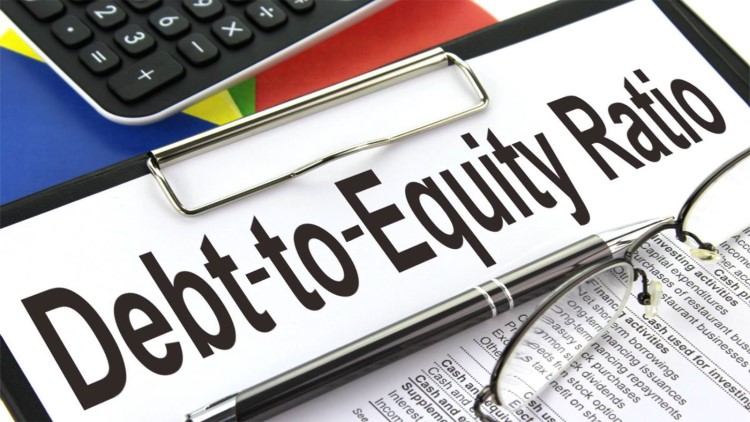The debt-to-equity ratio is a key metric for evaluating a company’s financial health and its ability to manage obligations. This ratio compares the amount of debt a company uses to the equity it holds to finance its operations. By analyzing the debt-to-equity ratio, businesses and investors can better understand a company’s financial leverage and risk. These insights help inform decisions related to investments and financial strategies.
What Is the Debt-to-Equity Ratio?
The debt-to-equity ratio is calculated by dividing a company’s total liabilities by its shareholder equity. It reflects the balance between the funds the company has borrowed (debt) and the funds provided by shareholders (equity). When it’s higher, it indicates that a company is more leveraged, meaning it relies more on borrowed funds to finance its operations. On the other hand, a lower ratio suggests that the company is more reliant on equity for funding.
The formula for calculating this ratio is simple. It’s calculated by dividing a company’s total liabilities by its total shareholder equity.
A ratio greater than 1 indicates that a company has more debt than equity, while a ratio below 1 suggests the opposite. Companies with higher ratios may face greater financial risk, as they have more debt to repay, which could strain their cash flow during downturns.
Why Is It Important?
The debt-to-equity ratio is one of the key indicators used by lenders, investors, and management to assess a company’s financial stability. A higher ratio might raise concerns about the company’s ability to meet its debt obligations, particularly if revenues decline or economic conditions worsen. Businesses with higher debt levels face higher interest payments, which can eat into profits and limit growth potential.
A lower debt-to-equity ratio indicates a company is less leveraged, giving it more flexibility to manage economic fluctuations. However, if the ratio is too low, the company may not be taking advantage of potentially profitable investment opportunities through leveraging. Balancing the ratio is essential for optimizing financial growth while managing risks.
Investors often prefer companies with a balanced debt-to-equity ratio because it indicates prudent financial management. The ideal ratio varies by industry. For example, capital-intensive industries such as manufacturing or real estate may have higher ratios, as they often rely on debt to finance large projects.
How to Interpret the Debt-to-Equity Ratio
When analyzing a company’s debt-to-equity ratio, it is crucial to consider industry norms and the company’s growth stage. Startups and high-growth companies may have higher ratios because they often use debt to fuel expansion. In contrast, established companies in stable industries typically have lower ratios, reflecting more conservative financial management.
A high debt-to-equity ratio may signal greater financial risk, but it can also indicate that a company is using debt effectively to finance growth. For example, if the borrowed funds are used to invest in projects that generate high returns, the company can increase its profitability despite the higher debt levels. However, if the company fails to generate sufficient returns, the debt could become a financial burden.
On the other hand, when it’s low it often indicates a company is less dependent on debt, but it may also suggest the company is not taking advantage of available opportunities to grow or expand its operations. Investors need to evaluate whether the company is using its resources effectively, rather than relying solely on a low ratio as a sign of financial health.
Factors That Affect the Debt-to-Equity Ratio
Several factors influence a company’s debt-to-equity ratio, including the industry it operates in, its growth stage, and market conditions. For instance, companies in industries with stable cash flows, such as utilities, often maintain higher debt levels, as they can reliably meet interest payments. In contrast, businesses in volatile industries, such as technology or retail, may opt for lower debt levels to minimize risk during economic downturns.
Market conditions also play a role. During periods of low interest rates, companies may increase their borrowing to take advantage of cheaper debt, which can push the debt-to-equity ratio higher. Conversely, when interest rates rise, companies may reduce borrowing to avoid higher interest costs.
Additionally, management’s strategic goals influence the ratio. Companies that prioritize growth and expansion may increase their debt levels to finance new projects. In contrast, more risk-averse companies may maintain lower debt levels to ensure greater financial flexibility.
How to Use it for Decision-Making
Businesses and investors use this to inform various financial decisions. For businesses, this ratio helps determine how much debt to take on and whether they can handle additional borrowing. A company with a low debt-to-equity ratio might consider taking on more debt to finance expansion. On the other hand, a company with a high ratio may focus on reducing debt to lower financial risk.
For investors, it’s an essential tool for evaluating potential investments. Companies with high debt levels may offer higher returns but come with greater risk. Investors need to assess whether the potential rewards justify the increased risk of financial distress. On the other hand, companies with low debt levels may provide more stability but may not offer the same growth opportunities as their more leveraged counterparts.
Lenders also rely on this to assess a company’s creditworthiness. A high ratio may indicate that a company is over-leveraged, making it a riskier borrower. In contrast, companies with lower ratios are generally considered safer bets for loans.
Managing the Debt-to-Equity Ratio
Businesses must carefully manage this to maintain financial stability and access to capital. If the ratio becomes too high, it may signal to investors and lenders that the company is overleveraged and financially strained. This can make it harder for the company to secure financing on favorable terms. Companies with high ratios may focus on paying down debt or increasing equity through retained earnings or issuing new stock.
Maintaining a balanced ratio requires ongoing monitoring of debt levels, interest rates, and equity. Companies should also keep an eye on market conditions and industry benchmarks to ensure they remain competitive. Regularly reviewing this allows businesses to adjust their financial strategies and manage risk effectively.
The Importance of the Debt-to-Equity Ratio
This is a crucial metric for assessing a company’s financial leverage and risk profile. By analyzing this ratio, businesses, investors, and lenders can make informed decisions about capital structure, risk management, and investment potential. A balanced debt-to-equity ratio can help companies grow while maintaining financial stability. Conversely, an unbalanced ratio may indicate financial risk and limit a company’s ability to borrow or invest.
This gives valuable insights into a company’s financial health but requires analysis alongside other metrics and industry benchmarks for accuracy. By carefully managing this ratio, businesses can improve their financial position and support long-term growth.


